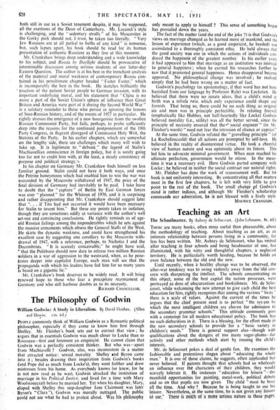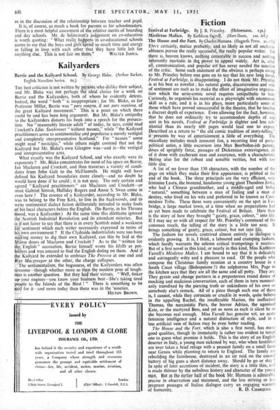Teaching as an Art
The Schoolmaster. By Aubrey de Selincourt. (John Lehmann. Si. 6d.) THERE are many books, often more useful than pleasurable, about the methodology of teaching. About teaching as an art, as an intimate relationship between persons living in a community, far less has been written. Mr. Aubrey de Selincourt, who has retired after teaching in four schools and being headmaster of one, has illuminated, with his witty and thoughtful chapters, a neglected territory. He is pthicularly worth heeding, because he holds an even balance between the old and the new.
Until recently, when a healthy change was to be observed, the after-war tendency was to swing violently away from the-old con- cern with sharpening the intellect. The schools concentrating on this object, some of the best capital the nation possesses, were portrayed as dens of obscurantism and bookishness. Mr. de Selin- court, while welcoming the new attempt to give each child the best education for him, rightly recognises that among the various " bests" there is a scale of values. Against the current of the times he argues that the chief present need is to perfect "the sys'em by which the most intelligent children are chosen for admission to the secondary grammar schools." This attitude commonly goes with a contempt for all modern educational policy. The book has no such diehardism in it. There is a blessing, for the effort made in the new secondary schools to provide 'for a " basic variety in children's needs." There is general support also—though with qualifications about the dangers of too many sugar-plums—for activity and other methods which start by rousing the chld's interests.
Mr. de Selincourt pokes a deal of gentle fun. He examines the fashionable and pretentious slogan about "educating the whole man." It is one of those claims, he suggests, often applauded but never believed. If parents thought that schools had so wholesale an influence over the characters of their children, they would scarcely tolerate it. He instances "education for leisure "—the manifold opportunities for painting, metal-work, political debate and so on that pupils are now given. The child "must be busy all the time. And why ? Because he is being taught to use his leisure. Nevertheless, at the same time, he is not given any leisure td use." There is much ora more serious nature in these pages,
as in the discussion of the relationship between teacher and pupil.
It is, of course, as much a book for parents as for schoolmasters. There is a most helpful assessment of the relative merits of boarding and day schools. Mr. de Selincourt:s judgement on co-education is worth quoting: "What really hajNpens in co-educational schools seems to me that the boys and glrliNiiend so much time and energy in falling in love with each other that they have little left for anything else. This is not fair on them" WALTER JAMES.



































 Previous page
Previous page